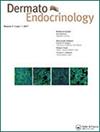恶性肿瘤 PD-1 抑制剂治疗中严重免疫相关不良事件的近期预测模型的预测价值。
IF 4.8
4区 医学
引用次数: 0
摘要
免疫相关不良事件(irAEs)对疗效有影响,大多数研究侧重于早期预测(基线数据),而不是近期预测(irAEs发生前的一个周期和当前周期)。我们旨在探索中性粒细胞/淋巴细胞比值(NLR)、血小板/淋巴细胞比值(PLR)、嗜酸性粒细胞绝对计数(AEC)对 PD-1 抑制剂诱发的严重 irAEs 的近期预测价值。数据收集自接受 PD-1 抑制剂治疗的肿瘤患者。NLR、PLR和AEC数据均来自上一周期和当前周期的虹膜不良事件发生情况。利用弹性净逻辑回归建立了预测模型,并利用尤登指数确定了临界值。使用贝叶斯生存分析法将预测结果与实际数据进行比较。共纳入 138 例患者,其中 47 例出现 1-2 级 irAE,18 例出现 3-5 级 irAE。预测模型通过 10 倍交叉验证确定了最佳α和λ。Shapiro-Wilk 检验、Kruskal-Wallis 检验和逻辑回归表明,只有当前周期的数据才有意义。NLR在预测上一周期的irAE方面具有统计学意义。NLR 和 AEC 对预测当前周期的 irAEs 均有显著意义。该模型的 ROC 曲线下面积(AUC)为 0.783,灵敏度为 77.8%,特异度为 80.8%。概率≥0.1345可预测严重虹膜急性心动过速。由 NLR、AEC 和性别组成的模型可预测当前周期的虹膜急性心动过速分类,与基线模型相比具有近期预测优势,并有可能延长患者的免疫治疗时间。本文章由计算机程序翻译,如有差异,请以英文原文为准。
Predictive value of near-term prediction models for severe immune-related adverse events in malignant tumor PD-1 inhibitor therapy.
Immune-related adverse events (irAEs) impact outcomes, with most research focusing on early prediction (baseline data), rather than near-term prediction (one cycle before the occurrence of irAEs and the current cycle). We aimed to explore the near-term predictive value of neutrophil/lymphocyte ratio (NLR), platelet/lymphocyte ratio (PLR), absolute eosinophil count (AEC) for severe irAEs induced by PD-1 inhibitors. Data were collected from tumor patients treated with PD-1 inhibitors. NLR, PLR, and AEC data were obtained from both the previous and the current cycles of irAEs occurrence. A predictive model was developed using elastic net logistic regression Cutoff values were determined using Youden's Index. The predicted results were compared with actual data using Bayesian survival analysis. A total of 138 patients were included, of whom 47 experienced grade 1-2 irAEs and 18 experienced grade 3-5 irAEs. The predictive model identified optimal α and λ through 10-fold cross-validation. The Shapiro-Wilk test, Kruskal-Wallis test and logistic regression showed that only current cycle data were meaningful. The NLR was statistically significant in predicting irAEs in the previous cycle. Both NLR and AEC were significant predictors of irAEs in the current cycle. The model achieved an area under the ROC curve (AUC) of 0.783, with a sensitivity of 77.8% and a specificity of 80.8%. A probability ≥ 0.1345 predicted severe irAEs. The model comprising NLR, AEC, and sex may predict the irAEs classification in the current cycle, offering a near-term predictive advantage over baseline models and potentially extending the duration of immunotherapy for patients.
求助全文
通过发布文献求助,成功后即可免费获取论文全文。
去求助
来源期刊

Human Vaccines & Immunotherapeutics
BIOTECHNOLOGY & APPLIED MICROBIOLOGY-IMMUNOLOGY
自引率
8.30%
发文量
0
审稿时长
1 months
期刊介绍:
(formerly Human Vaccines; issn 1554-8619)
Vaccine research and development is extending its reach beyond the prevention of bacterial or viral diseases. There are experimental vaccines for immunotherapeutic purposes and for applications outside of infectious diseases, in diverse fields such as cancer, autoimmunity, allergy, Alzheimer’s and addiction. Many of these vaccines and immunotherapeutics should become available in the next two decades, with consequent benefit for human health. Continued advancement in this field will benefit from a forum that can (A) help to promote interest by keeping investigators updated, and (B) enable an exchange of ideas regarding the latest progress in the many topics pertaining to vaccines and immunotherapeutics.
Human Vaccines & Immunotherapeutics provides such a forum. It is published monthly in a format that is accessible to a wide international audience in the academic, industrial and public sectors.
 求助内容:
求助内容: 应助结果提醒方式:
应助结果提醒方式:


